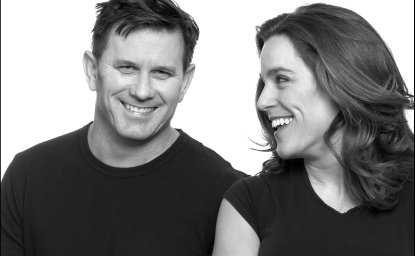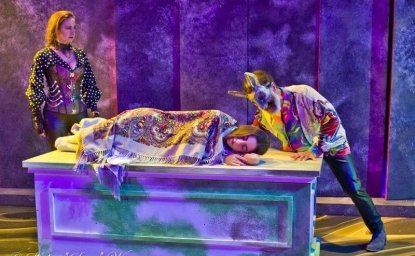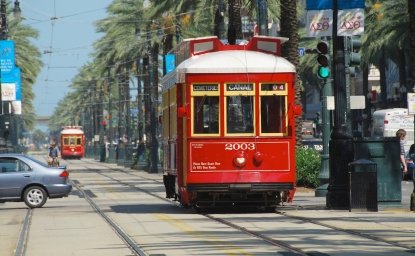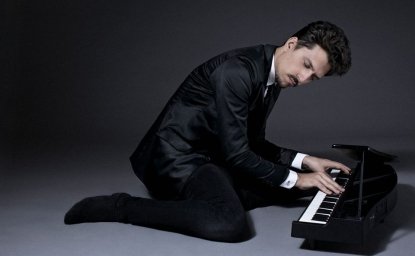
Montreal and Quebec had come out of World War II stuck in a time warp that placed La Belle Province at odds with much of North America. For more than a century, the province languished under a brokered allocation of power which stymied entrance into the contemporary world. An Anglophone Protestant elite controlled the commanding heights of commerce from their granite citadels in Montreal. French-speaking Catholic clergy controlled the rest of the province, keeping their flock tied to the countryside for farming or, in many instances, the messier task of resource extraction. A nationalistic right-wing populist government under Premier Maurice Duplessis and his thuggish Union Nationale Party--together with corrupt police and officialdom--used its gerrymandered majority in the Assemblée nationale to insure that nothing would change.
Transformation came as the rest of the continent increasingly became incorporated into what would grow in a few years into the most dynamically mobile continental economy in world history. Eventually, following Duplessis’s death, the previous system snapped during the “Quiet Revolution” begun in 1960 by a new Liberal Government under Jean Lesage. Modernity arrived in Quebec with a vengeance, unleashing intense socio-political and socio-cultural adjustments accompanied by secularization, the creation of a welfare state, and incompatible federalist and sovereigntist factions. Identities and values radically loosened as Quebec went, according to numerous surveys, from being the most religious to the most secularized society in North America.
Nothing escaped this makeover including performance dance. Beginning almost immediately following the World War II, those Montrealers connected to continental trends in the arts began to push back against repressive policies of Duplessis and the Roman Catholic Church. New Montrealers debarking from war-torn Europe brought their cultural tastes and expectations with them. Before 1945, the only serious dance reaching Montreal stages was performed by visiting companies made up of Americans, Europeans and displaced Russians (including Ruth St. Denis, Isadora Duncan, Anna Pavlova and various legacy companies from Les Ballets Russe). By the 1960s Montreal had its own classical company--Les Grands Ballets Canadiens--and the first of what would become a panoply of modern dance troupes.
The theater community constituted a radicalizing vanguard pushing forward exciting fresh voices who were striving to decipher the meaning of everyday experiences on stage. Les Grands Ballets Canadiens established dance at the forefront of the city’s cultural life during the late 1950s through its performances, its school and studios and its community outreach programs. Contemporary dance companies appeared as an increasingly vibrant community formed with more and more performers arriving, audiences growing and donors opening their coffers.
Danse-Cité was the inspiration of Daniel Soulières who founded the company in 1983 before turning it over to choreographer Jean-Pierre Perreault. He remained a major player within the company in numerous capacities ever since, serving as Artistic Director in recent years.
Soulières embraced dance after having completed his degree in psychology at l’Université de Montréal. Initially studying classical ballet, he turned to contemporary dance working with leading teachers such as Peggy Baker, Peter Boneham Linda Rabin and Tassy Teekman. Soulières quickly became one of the most popular dancers in Montreal, performing an average of thirty-seven shows each year between 1977 and 1996. These productions included roles created for him by choreographers James Kudelka, Françoise Sullivan, Jeanne Renaud and Paul-André Fortier among many. He himself choreographed and co-choreographed dozens of works.
Soulièrs established Danse-Cité to promote contemporary dance. He began by presenting new works over a two week period--his Treize chorégraphes pour deux danseurs ran a month--and actively sought out young performers and choreographers to bring their work to the stage. His reliance on new talent made for an easy transition to new troupe leadership in 1986.
Beyond Danse-Cité, Soulières worked as artistic advisor to the legendary Montreal dance company Le Groupe de la Place Royale and founded several production groups including Qui Danse, Les Événements de la Pliene Lune and Most Modern. These efforts supported the development of emerging artists throughout the 1980s and 1990s into the current century. Such programs expanded over time to embrace exchanges with European companies.
Soulières insisted from the very beginning that Danse-Cité have no single choreographer or artistic team, featuring instead a variety of ground-breaking works by numerous innovative artists. At least three generations of youthful dancers and choreographers got their start though various Soulièrs-organized programs including, among many: Irèni Stamou, Isabelle Van Grimde, Jane Mappin, Roger Sinha, Holy Body Tatoo, Estelle Clareton and Laurence Lemieus.
Soulières similarly sought to cultivate new audiences for contemporary dance. He took his artists into the community, often appearing at nearly a dozen cultural centers scattered around the city. He attracted new audiences with multidisciplinary approaches to performance dance combining dance, theatre and poetry. He expanded the relationship between artist and public in every way that he could imagine. Most recently, Danse-Cité has promoted the use of dance to mediate across the cultures of Montreal’s varied local communities.
Thirty-five years after its founding, Danse-Cité bills itself as a “Montreal-based research, creation, production and distribution company dedicated to the advancement of contemporary dance” by being at the “forefront of Montreal’s cutting-edge dance scene.” The company produces four works and presents three dozen shows during the course of most years as it seeks to meld works by younger new artists with works drawing on their collaboration with more established practitioners.
The twentieth-first century began with Montreal well established as a significant international center for performance dance, and a global leader in the two dance-related genres of physical theater and circus arts. One might have thought this always was so. However, just a half-century before, clerical arbiters of public taste throughout Quebec frowned on physical artistic expression in almost any form.
The emergence of first classical, then modern and contemporary dance in Montreal is inexorably linked to broader, profound changes in society that drove political conflict and deep cultural wars. The Quebec transformation to modernity is no less dramatic for being swift and largely peaceful. Accompanying dislocations drove the preeminence of the arts--including literature, theatre, cinema, television, circus, music or dance--as a form of bringing together high culture with street performance.
Dance became embedded in Montreal life--a space in which it had largely been absent--because the dance community constructed a broad base of supporting institutions ranging from studios to schools. Dance has thrived in Montreal because it became rooted in local society by interacting with it. Artistic visionary Daniel Soulières helped make this happen while creating community.
Artistic Visionaries and Community Creators
The power of the performing arts to nurture inclusive communities has been praised widely in recent years; so much so that “creative placemaking” is now seen as a powerful tool in community development. The supportive role of community in fostering artistic innovation is less acknowledged. This series highlights the work of visionaries for whom creating communities of students, protégés, audiences, and donors has become a strategic element in transforming their arts.
Author

Former Wilson Center Vice President for Programs (2014-2017); Director of the Comparative Urban Studies Program/Urban Sustainability Laboratory (1992-2017); Director of the Kennan Institute for Advanced Russian Studies (1989-2012) and Director of the Program on Global Sustainability and Resilience (2012-2014)
Explore More in Artistic Visionaries and Community Creators
Browse Artistic Visionaries and Community Creators
Mark and Susan Marie Rhea and Irish Theater

Hugo and Rebecca Medrano and Hispanic Theater

Andrew Kingsley, Andrew Vaught and Social Impact Theater

